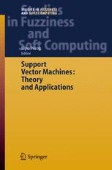Search
Search Results
-
Prompt-optimized self-supervised double-tower contextualized topic model
Microblog has a large amount of data and is updated quickly with current events. Unsupervised machine learning models are used for the topic...

-
FLBC-IDS: a federated learning and blockchain-based intrusion detection system for secure IoT environments
The development of the Internet of Things (IoT) in multiple sectors has led to substantial security issues due to its decentralized structure and...

-
AN efficient deep learning with an optimization framework to analyse the eeg signals
Electroencephalogram (EEG) signals can offer a mode to communicate with the humans and outside world. Also, the human brain is negatively affected...

-
Optimization of Image Compression Method Based on Fuzzy Relational Equations by Overlap Level of Fuzzy Sets
A design method of coders on YUV color space is proposed based on an overlap level of fuzzy sets, in order to optimize the image...
-
Multi-layer Image Transmission with Inverse Pyramidal Decomposition
This paper presents a new image compression method based on the Inverse Difference Pyramid (IDP) decomposition, and one specific application of this...
-
A Fuzzy Rule-Based Trading Agent: Analysis and Knowledge Extraction
In this paper, we show how a fuzzy rule-based system is developed for trading in a futures market. By our fuzzy rule-based system, an agent...
-
Non-Iterative ICA for Detecting Motion in Image Sequences
The ICA (Independent Component Analysis) technique can be used to detect difference in a sequence of images. However, most implementations of this...
-
Fuzzy Congestion Control In Packet Networks
In this paper an adaptive fuzzy congestion control solution for active queue management in packet switched networks which use TCP to solve end-to-end...
-
Mining Technical Patterns in The U. S. Stock Market through Soft Computing
Technical analysis has been a part of financial practice for many decades. One of the most challenging areas in technical analysis is the automatic...
-
Multiple Feature Relevance Feedback in Content- Based Image Retrieval using Probabilistic Inference Networks
The BIR content based image retrieval system uses a Bayesian belief network architecture to match query by example images to images in a database....
-
Distances Between Intuitionistic Fuzzy Sets and their Applications in Reasoning
In this article we propose the use of intuitionistic fuzzy sets (Atanassov [2]) as a tool for reasoning under imperfect facts and imprecise...
-
On The Generalization of Fuzzy Rough Approximation Based on Asymmetric Relation
An asymmetric relation, called a weak similarity relation, is introduced as a more realistic relation in representing the relationship between two...
-
Connectionist Fuzzy Relational Systems
There have been an enormous number of fuzzy systems developed so far. For excellent surveys the reader is referred to [1][3][5][7][9][10][18][19]....
-
7 Concluding Remarks
As indicated in the Chapter 1, the objectives of this monograph were to present a unified framework for combining compliant motion control,...
-
Fuzzy Logic Control in Hybrid Power Systems
In this chapter the dynamic analysis of a hybrid power system, employing diesel and locally available wind and solar energies, is discussed and...
-
Iterative Single Data Algorithm for Training Kernel Machines from Huge Data Sets: Theory and Performance
The chapter introduces the latest developments and results of Iterative Single Data Algorithm (ISDA) for solving large-scale support vector machines...
-
Application of Support Vector Machines in Inverse Problems in Ocean Color Remote Sensing
Neural networks are widely used as transfer functions in inverse problems in remote sensing. However, this method still suffers from some problems...
-
Tachycardia Discrimination in Implantable Cardioverter Defibrillators Using Support Vector Machines and Bootstrap Resampling
Accurate automatic discrimination between supraventricular (SV) and ventricular (V) tachycardia (T) in implantable cardioverter defibrillators (ICD)...
-
Cancer Diagnosis and Protein Secondary Structure Prediction Using Support Vector Machines
In this chapter, we use support vector machines (SVMs) to deal with two bioinformatics problems, i.e., cancer diagnosis based on gene expression data...
-
Collision Free Motion Planning on Graphs
A topological theory initiated in [4,5] uses methods of algebraic topology to estimate numerically the character of instabilities arising in motion...
